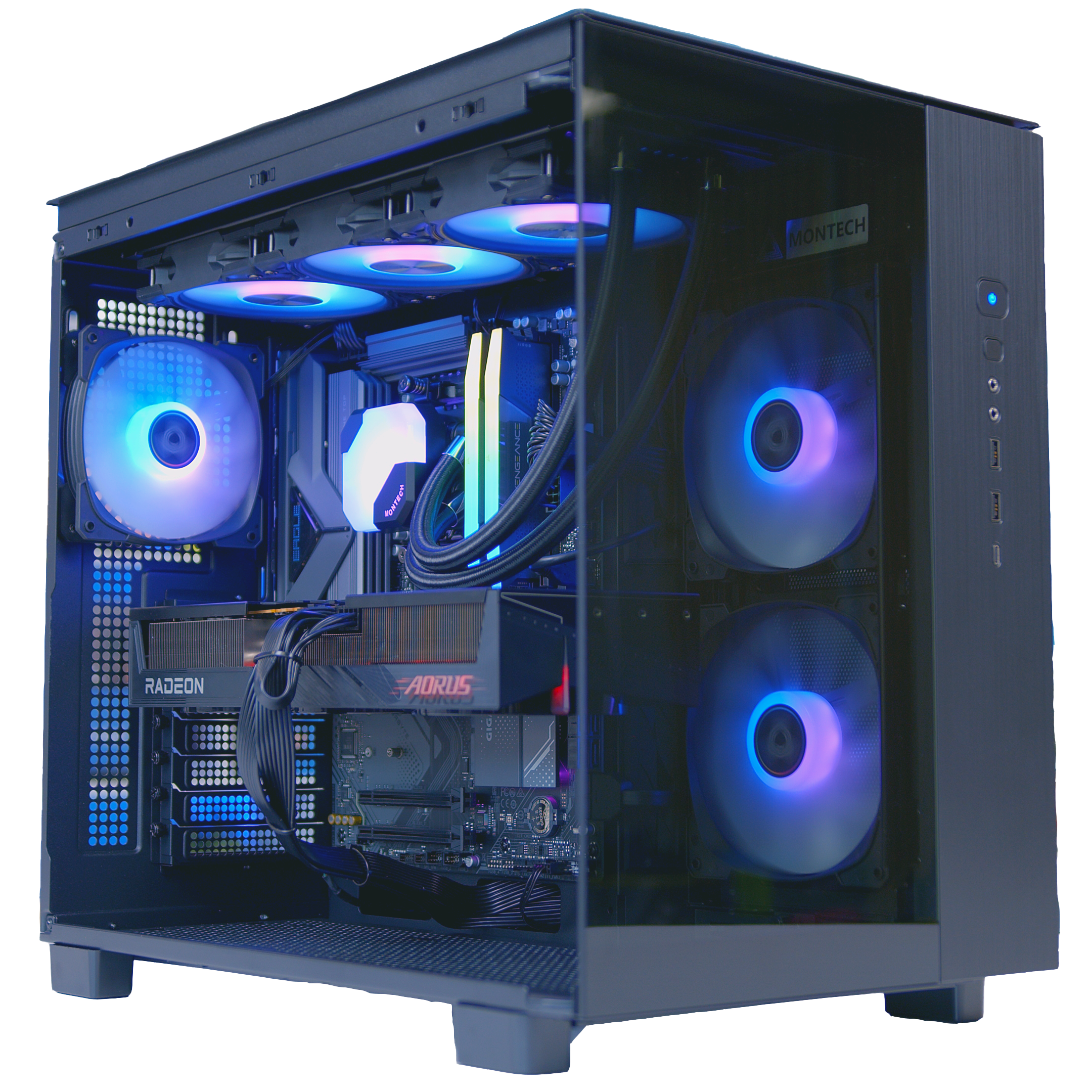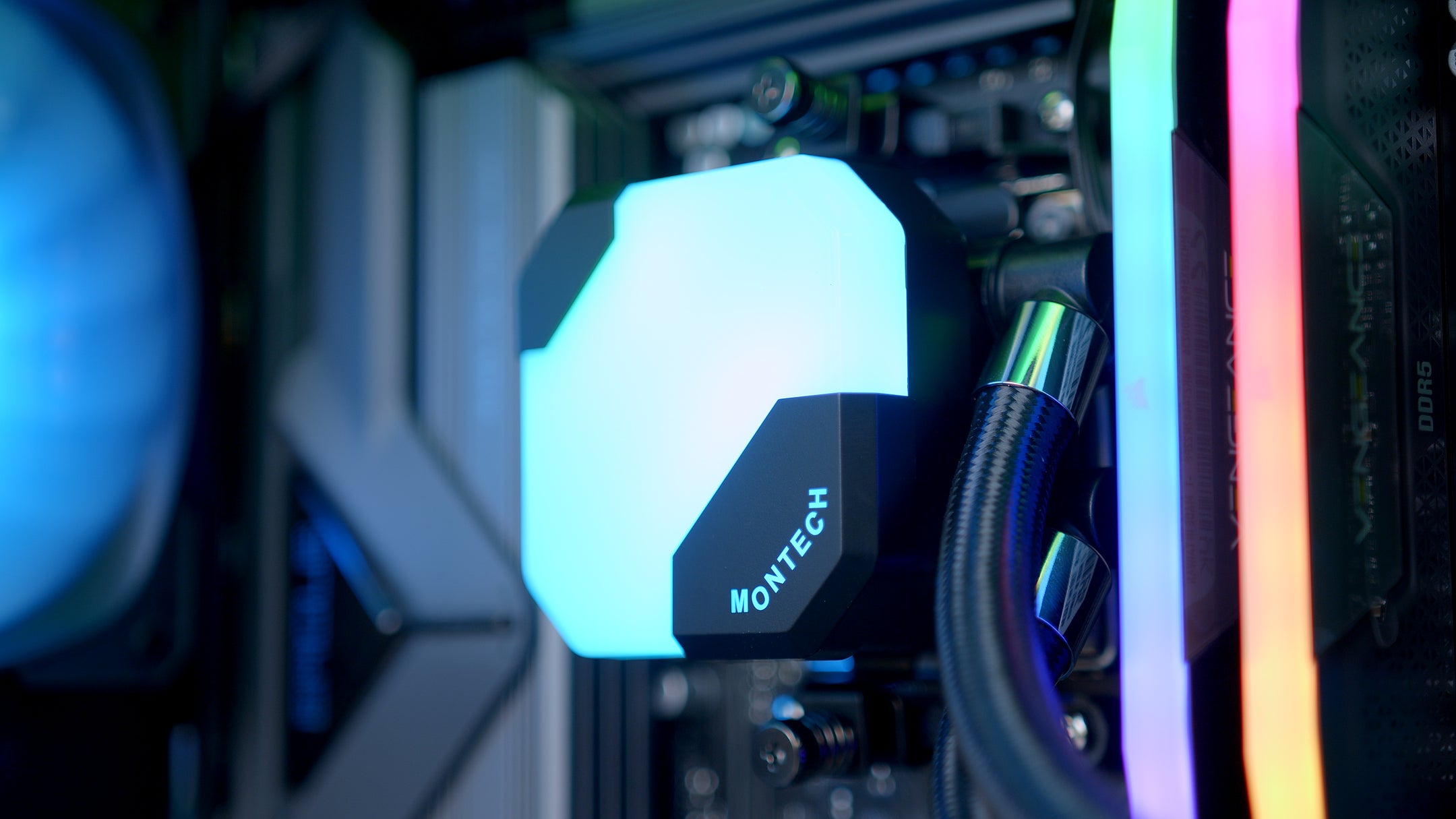CPU (Processor): AMD Ryzen 5 7600
The Ryzen 7600 is our CPU pick for entry-level and mid-range builds due to it's 6 cores, 12 threads and strong clock speeds. It runs fairly cool, and has a rated TDP of just 65W.
CPU Cooler: UpHere up1KC4
This single air tower cooler offers an RGB strip down the middle and provides ample cooling to ensure the Ryzen 5 7600 performs optimally.
Motherboard: ASRock B850M Steel Legend WiFi
A stunning white Micro-ATX motherboard with plenty of connectivity options, RGB lighting, and blazing fast onboard WiFi 7.
RAM: Corsair Vengeance DDR5
Corsair's range of RAM DIMMs provides a great option for builds powered by a TeamRed CPU. They offer better compatibility and more reliability. ❗Due to global RAM shortages, White PCs will now ship with black RAM kits as standard.
SSD: Lexar NQ790/EQ790
Both of these Lexar drives are excellent additions to any system. Read and write speeds surpassing 5 Gigabytes per second, they're reliable and resilient for high-framerate gaming!
GPU (Option 1): NVIDIA GeForce RTX 5060
The NVIDIA GeForce RTX 5060 is an excellent graphics card for playing your favourite titles at 1080p. With the bonus addition of DLSS and Frame Gen, playing your favourite games at high framerates is no issue for this card!
GPU (Option 2): AMD Radeon RX 9060 XT
The AMD Radeon RX 9060 XT is one of AMD's budget-oriented options of 2025. Equipped with 16GB of VRAM, this card is more than capable of offering high framerates at 1440p, putting it on par with NVIDIA's RTX 5060 Ti across a range of AAA titles.
Case: Lian Li Vector V100R
This chassis is a gorgeous white case with dual tempered glass panels, showing off your glorious build, and plenty of RGB lighting to boot.
PSU: MSI MAG A650BNL
An excellent entry-level white PSU providing 650W of juice for your components, which is more than ample for this system!
Operating System: Windows 11
All of our systems come preinstalled with an activated copy of Windows 11 set to the 'Out of Box Experience'. This allows you to set the PC back up to your liking.





























